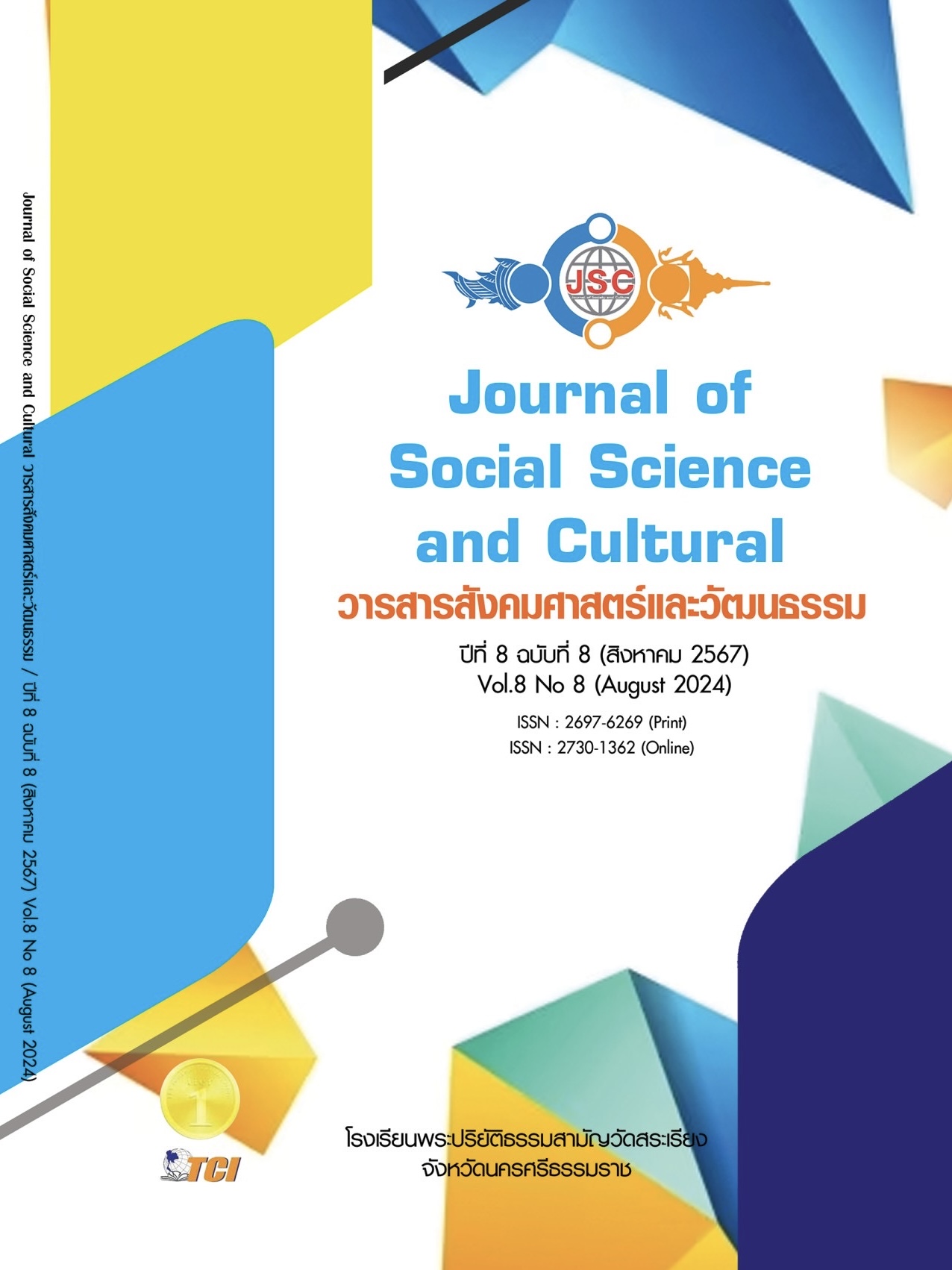ERRORS ANALYSIS IN ENGLISH ENDING SOUNDS MADE BY FINAL-YEAR STUDENTS OF EDUCATION PROGRAM, YALA RAJABHAT UNIVERSITY
Main Article Content
Abstract
This research aimed to 1) Study the errors in the pronunciation of English ending sounds made by final-year students of the Education Program at Yala Rajabhat University and
2) Investigate the causes and factors that lead to these errors. The sample consisted of 216 final-year students of the Education Program at Yala Rajabhat University, selected through quota sampling. This research employed both quantitative and qualitative methods. Quantitative data were used to analyze pronunciation errors, while qualitative data were used to study the causes and factors leading to these errors. The research tools included ending sounds pronunciation test and a questionnaire. The research findings indicated that the ending sounds /ð/ /ɡ/ /ʒ/ /n/ /ʃ/ and /ʧ/ were the most frequently mispronounced sounds by the students. The pronunciation errors included 1) Substitution: Students substituted voiceless ending sounds for voiced ones and pronounced ending sounds similarly to Thai ending sounds. 2) Alteration: Students replaced English ending sounds with sounds that have different places and manners of articulation, which stemmed from language interference caused by the similarities between Thai and English and the students' inability to distinguish these differences. 3) Omission: Students omitted ending sounds and did not pronounce all sounds in clusters, caused by the inherent difficulty of the language, negative transfer and lack of knowledge in pronouncing English ending sounds.
Article Details
References
กมลเนตร ลีวาเมาะ. (2544). การศึกษาเปรียบเทียบการออกเสียงพยัญชนะกักท้ายคําภาษาอังกฤษของนักเรียนที่ มีภูมิหลังทางภาษาต่างกัน. ใน วิทยานิพนธ์การศึกษามหาบัณฑิต สาขาวิชาภาษาศาสตร์. มหาวิทยาลัยศรีนครินทรวิโรฒ.
กัญญารัตน์ เอี่ยมวันทอง. (2565). การพัฒนารูปแบบการจัดการเรียนการสอนภาษาอังกฤษเพื่อทักษะการเรียนสำหรับนักศึกษาปริญญาตรีในศตวรรษที่ 21. SSRU Journal of Public Administration, 5(3), 267- 278.
ถิรวัฒน์ ตันทนิส. (2555). การศึกษาปัญหาการออกเสียงภาษาอังกฤษและกลวิธีการเรียนออกเสียงภาษาอังกฤษของนักศึกษาสหวิทยาการชั้นปีที่ 3 มหาวิทยาลัยธรรมศาสตร์. Language and Linguistics, 31(1), 81-102.
ทิพย์วรรณ จรรยาสุภาพ. (2525). การวิเคราะห์การอกเสียงภาษาอังกฤษของนักศึกษาวิชาเอกภาษาอังกฤษ ระดับประกาศนียบัตรวิชาการศึกษาชั้นสูง. ใน วิทยานิพนธ์คุรุศาสตรมหาบัณฑิต สาขาวิชามัธยมศึกษา. จุฬาลงกรณ์มหาวิทยาลัย.
รุสลาน สาแม และเปรมินทร์ คาระวี. (2558). พฤติกรรมการออกเสียงพยางค์หนัก - เบาในคำภาษาอังกฤษจากผลการสอนแบบฟัง - พูดร่วมกับการสอนความรู้ทางสัทศาสตร์: การศึกษานักเรียนชั้นมัธยมศึกษาปีที่ 4 โรงเรียนศิริราษฎร์สามัคคี อำเภอมายอ จังหวัดปัตตานี. วารสารศึกษาศาสตร์ มหาวิทยาลัยสงขลานครินทร์, 26(1), 85-99.
ศิริรัตน์ ชูพันธ์ และอรรถพล พิพัฒน์. (2560). การออกเสียงพยัญชนะท้ายภาษาอังกฤษของนักศึกษามหาวิทยาลัยราชภัฏสุราษฎร์ธานี. Humanities Journal, 24(1), 222-250.
อาทิตย์ ถมมา และคณะ. (2564). การศึกษาเปรียบเทียบปัญหาการออกเสียงพยัญชนะภาษาอังกฤษและภาษาไทย: ความเหมือนและแตกต่าง. Journal of MCU Ubon Review, 6(1), 737-756.
อาภาพรรษ์ เรืองกุล. (2563). ปัญหาการออกเสียงภาษาอังกฤษของคำที่ลงท้ายด้วย ed ของนักศึกษาไทยระดับปริญญาตรี. วารสารมนุษยศาสตร์และสังคมศาสตร์ มหาวิทยาลัยราชภัฏอุดรธานี, 9(1), 39-55.
Kirkpatrick, A. (2007). World Englishes: Implications for International Communication and English Language Teaching. Cambridge: Cambridge University Press.
Krejcie, R. V. & Morgan, D. W. (1970). Determining sample size for research activities. Educational and Psychological Measurement, 30(3), 607-610.
Nakin, P. & Inpin, B. (2017). English Consonant Pronunciation Problems for EFL Students: A Survey of EFL Students. Chiang Rai: Mae Fah Luang University.
Sa-e-dee, S. (2020). English Pronunciation Problems of Thai Students in Semarang. In thesisPartial Fulfillment of the Requirements for Degree of Bachelor of Education in English Language Education. Walisongo State Islamic University.


